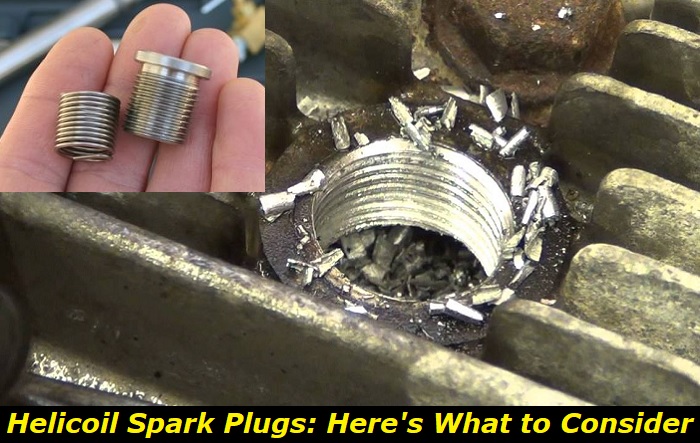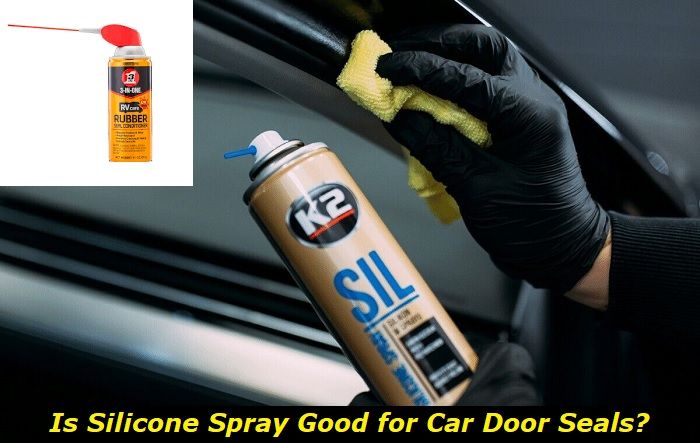The constant change of spark plugs over a long time can expose the threads of the spark plug holes to wear and tear. Cross-threading and over-torquing of the spark plug can also cause damage to the threads. That's where a Helicoil comes in to fix the damaged threads.
Engine repair mistakes highlights
- Level of importance:extremely important
- When done:DIY repairs or diagnostics
- Cost of mistake:$250 - $4,000
- How to avoid:professional inspections, getting help from mechanics
- Consequences:broken engine, need for engine replacement
- DIY solutions:not many

What is a Helicoil kit and How Does It Work?
A helical insert is a thin steel spring of wire that can reinforce bolted connections and repair stripped threads in a spark plug hole found on the cylinder head. It's also called screw thread insert and hails from a brand called Stanley Engineered Fastening.
Helicoil insert repair is the least intrusive thread repair method. You can use the inserts on light, and soft materials such as Aluminum, wood, plastics, magnesium, and zinc die castings.
The helical inserts extend the lifespan of the threaded hole by preventing wear and tear. They also provide a heat-resistant and high-strength solution. When you install the helical inserts correctly, they form a stronger permanent bond than the original bolt fastening.
The Helicoil is usually wider than the spark plug hole it's inserted into. The coil expands when inserted into the drill hole, and the bolt is screwed down, creating a locking torque and forming a firm and tight seal against the threads.
The advantage of the Helicoil insert over other conventional bolts is that it transfers the shear stress into radial loading over the entire insert's length. This creates a stronger bond than tapping and drilling. On the other hand, conventional bolts have the first three threads of the inserts carrying a large percentage of the load. Now that you know what a Helicoil is, let's look at the different types of helicoils.
Types of Helicoil
- Tanged Inserts
Tanged inserts are the most common type of thread repair inserts. The inserts have a cross-section in the shape of a diamond. Their inner surface contains sixty-degree threads, with their outer surface specially designed to grip onto the spark plug hole firmly.
- Free Running Inserts
The free-running inserts are a bit bigger than the holes they are inserted. They use the power of the spring-loaded action to grip the walls of the holes in which they are installed. This allows easy installation and removal. The inserts don't need any locking material.
- Tanged Free Running Inserts
These coils are designed to be corrosion free. They are designed to allow quick repair of damaged threads and meet aerospace and military standards.
- Screw locking Inserts
These inserts apply pressure on the fastener holding it tight through a series of flat spots that you can find on the spiral threads. The coils grip the threads of the installed screw and prevent the screw from loosening under impact or vibration. The inserts can retain their grip if you reuse them. They also allow the reassembly and removal of bolts without a significant torque loss.
Why is It a Bad Idea not to Remove Cylinder Head While Repairing Stripped-Out Spark Plug Threads?
Removing the cylinder head to repair stripped-out threads in the spark plug hole can be an uphill task. However, if you try fixing the threads without removing the cylinder head, you could open a can of worms.
This is because if metal chippings and debris (from tapping out the hole) drop into the cylinder and the combustion chamber, it can result in engine problems. Removing the cylinder head prevents the issue and allows easy access to the spark plug hole for easy installation of the Helicoil.
How to Repair Spark Plug Threads Without Removing the Cylinder Head
If you choose to tap the hole with the cylinder head on, there are a couple of things you need to do to prevent the entry of debris into the engine. One is to rotate the drive chain to ensure the valves are closed and the piston in the cylinder is at the bottom dead center (far down the bore).
This is to prevent the piston's crown from coming into contact with the tap's end. It would help if you also filled the end of the grooves of the tap with grease. This ensures the grease traps the metal chippings to prevent them from dropping into the cylinder. Once you're done tapping, remove the metal scrape with a screwdriver or blow it out with compressed air.
A better option would be to insert a shop vac hose into the muffler to prevent some chippings from passing through the exhaust valve. The techniques above work well if the chippings are made up of Aluminum.
This is because a small amount of aluminum scrape could end up in the engine. Since Aluminum is a soft metal, no significant damage can be done to the engine as opposed to hard metal like steel.
How to Helicoil Stripped Spark Plug Hole Threads
The tools you need to Helicoil damaged spark plug threads include:
- STI gauge.
- ½ " socket wrench.
- ? " long extension.
- ½ " to ? " adapter.
The steps include:
- The first step before application of the Helicoil is to determine the right size of the Helicoil to match the hole size. You can do this using an STI gauge. You can also choose the right size of the Helicoil to insert from a master kit.
- The first step is to remove the spark plug wiring and the valve cover to access the spark plug and detach it from its hole.
- Connect the save-a-thread tap to the ? " extension and attach it to a ½ " to ? " adapter.
- Put the Helicoil tap tool inside the spark plug hole and turn it until you feel some resistance.
- Apply anti-seize on the new thread before thread cutting. This is to prevent it from seizing up and getting stuck. You can also use WD 40 as a cutting lubricant on Aluminum.
- Begin cutting the new threads by attaching them to the ½ " socket wrench. While doing this, use a flashlight to confirm the valves are closed if you don't intend to remove the cylinder head.
- Continue turning the tap tool until it bottoms out. After installing the new insert, blow out the hole to remove all residue.
- Clean up the anti-seize before you can apply the Loctite. This is to avoid the two mixings. Helicoils do not need thread lockers or sealants; if necessary, you can use a high-temperature red Loctite. The Loctite ensures that the new insert stays in place when you remove the spark plug.
- Screw the insert on the spark plug, then place the new insert all the way down into the spark plug hole. The insert should be flush with the spark plug hole. The tang helps pull the coil into place from the inner end.
- Break the tang off nice and easy using a pair of needle nose pliers and remove it using tweezers or a magnet.
Tips to Consider when Inserting a Helicoil in Place of Damaged Threads
- To ensure the new Helicoil threads are concentric and parallel to the original threads, start by threading the Helicoil tap in the remaining threads in the head.
- The standard depth of the new insert should be ¼ to ½ turn below the top surface of the original hole.
- The tapping for the Helicoil should be in line with the axis of the spark plug hole.
Alternatives to the Helicoil Inserts
- Timesert Kit
The difference between the Helicoil and the Timesert is that Helicoil is the spring type while Timesert is the solid type. With Timesert, a step tap is used to retap a hole that is a bit larger than the original hole. The pilot threads of the step tap increase in diameter to the insert's size, with the pitch size remaining the same. With this type of repair, no drilling is required, and the tapped threads are more parallel to the original threads.
- Back Tap
This is a special type of tap that you can insert into a spark plug hole, expand it, and draw it backward to repair the threads. You can use it when the bad threads are at the hole's beginning. The tap uses good threads to ensure the hole it repairs is straight.
- The Spark Plug Thread Chaser Tool
The tool also helps rethread and clean the damaged spark plug hole. It also reduces cross-threading, straightens damaged threads, and removes corrosion within the spark plug hole.
Bottom Line
There you have it-all about the Helicoil kit and why it's a bad idea to repair the threads of the spark plug hole while the cylinder head is in place. You only get one shot at repairing the threads. That's why the procedure has to be precise.
That means the alignment, angle, and depth have to be right, and there's no room for error. If you're not skilled in that area, it would be best to visit a machine shop with your cylinder head to avoid complications.
About the authors
The CarAraC research team is composed of seasoned auto mechanics and automotive industry professionals, including individuals with advanced degrees and certifications in their field. Our team members boast prestigious credentials, reflecting their extensive knowledge and skills. These qualifications include: IMI: Institute of the Motor Industry, ASE-Certified Master Automobile Technicians; Coventry University, Graduate of MA in Automotive Journalism; Politecnico di Torino, Italy, MS Automotive Engineering; Ss. Cyril and Methodius University in Skopje, Mechanical University in Skopje; TOC Automotive College; DHA Suffa University, Department of Mechanical Engineering






Add comment